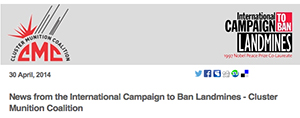04 April 2007
Tajikistan : A Lack of International Assistance Is Threatening Mine Action And Landmine Victim Assistance Work
On 30 March 2007, the Tajik Mine Action Center (TMAC) and the International Campaign to Ban Landmines (ICBL) jointly held a workshop on the progress made and remaining challenges in the implementation of the Antipersonnel Mine Ban Treaty. The key finding of the day is that Tajikistan has taken great strides towards fulfilling its obligations under the treaty, but other States Parties to the treaty have failed to meet their legal duty to support Tajikistan’s efforts.
The treaty specifies that “each State Party in a position to do so shall provide assistance for mine clearance and related activities.” Their failure to do so means that mine clearance and victim assistance activities may run out of funding on 30 April of this year. Though major donor states and organizations were invited to participate in the workshop, most of them failed to attend. Participants made a unanimous strong plea for international support to be given to Tajikistan to ensure it meets his obligations under the Convention. “We can’t continue to do mine action forever for nothing. People can’t continue to suffer for lack of a few dollars. We’ve done everything we can to fulfill our treaty obligations. We just need some help,” said William Lawrence, departing Chief Technical Advisor from the United Nations Development Program (UNDP).
Tajikistan is supposed to clear all mined areas in its territory by 1 April 2010. There remain around 25 square kilometers of suspected mined areas, and at least $12 million over the next three years will be needed to clear the land. Unlike some states that are failing to attract international attention, Tajikistan has clearly demonstrated that it has the capacity and has done the necessary preparations to receive such support. For example,
- Tajikistan has a national mine action strategy and a running mine action programme
- Tajikistan has the national capacity to demine and a potential to increase activities
- Over the past two years, mine dogs and other technical improvements has doubled productivity while cutting costs in half per square meter cleared.
- In 2006, Tajikistan developed a plan of action on victim assistance that the UNDP said should serve as a model for other countries.
- All stakeholders, national and international, are working together on mine action in a coordinated manner
- The government is providing financial and in-kind support for support for mine action and has shown commitment to full compliance with the Convention
- Tajikistan participates in international meetings on the Mine Ban Treaty and is engaged in universalization efforts at regional level
- Diplomatic efforts are being made with neighboring states to allow for mine clearance in border areas
Despite these achievements, donor support for Tajikistan’s mine action and victim assistance has never been sufficient, and has decreased dramatically in the past year. This year only two out of six mine clearance teams and no survey teams have been deployed because of a lack of funding.
A lack of activity means that the mines are not being cleared quickly enough and that capacity may be lost through lack of activity. This is in sharp contrast to the call of TMAC to increase productivity so that its 10 year Treaty deadline can be met. Participants expressed deep dismay about the lack of donor interest in providing financial and technical support for mine action and victim assistance in Tajikistan. “Why is the international community failing to support a winning team?” asked Sylvie Brigot, ICBL Executive Director.
Participants called on funders to transfer urgently the money they have pledged for 2007, to increase allocations, and to provide multi-year funding to allow for longer-term planning. They also called on Central Asian states to develop a regional approach to mine action in order to share information, solve common problems, and strengthen regional security and cooperation. At the same time, workshop participants noted that implementation of the treaty is ultimately Tajikistan’s responsibility.
With this in mind, participants discussed how to nationalize the mine action programme and ensure long-term funding. One recommendation was for the national government to appoint a civilian agency under the Ministry of Defense to take over mine clearance operations. The government was also advised to show the international community that mine action is an integral part of development needs by including mine clearance in major development plans and documents such as the Poverty Reduction Strategy Paper, the UN Millenium Development Goals, the UN Combined Projects Appeal process and the EC Strategic Paper, none of which has happened yet despite efforts undertaken by TMAC.
Victim assistance was also discussed at length during the workshop. Survivors participating in the workshop made a strong plea for an improvement of their economical and social conditions so that they could rebuild their lives after their accident. “We need to have psychological services, increased public awareness, and protection of the rights of people with disabilities” said Zayniddin Rasulov, a survivor speaking at the workshop. “There is a great need for a physical rehabilitation strategy for survivors, but the most important is to improve social conditions and to save lives of other people living in mined areas.” Participants called on donors to support what the UNDP called a model strategy on Victim Assistance. So far, no donors have agreed to provide funds for the VA plan of action. On 4 April, the second United Nations Day for Mine Awareness and Assistance, and in the 10th Anniversary year of the creation of the Convention, the ICBL and TMAC call on the international community to recognize the progress that has been made in Tajikistan and provide the support necessary to clear mines and assist landmine survivors.
- Implementation Workshop Report


